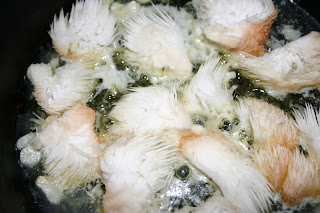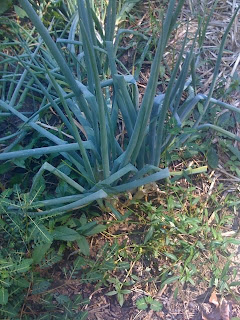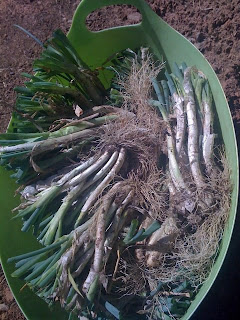

Country Girl asked the following question about mushrooms-
We have millions of mushrooms on our land but I have yet to try (or dare) and identify them. I am curious if it is easier to learn to identify or be safe and plant your own.Here is my take on that.First thing is you don't have to be able to identify all the mushrooms you see, only the ones that are good to eat. In any particular region of the country there are only a few and they usually have very distinct features making them pretty easy to identify. I suggest getting involved with a local mushroom club, befriending the mycologist professor at your local land grant university or finding someone nearby who knows what good edibles are native to your area.
I am fascinated by fungi and like to try to identify the ones i find. Believe me, it is not easy to do. I have 5 mushroom I.D. books but there are so many different mushrooms out there that i rarely find the ones i've collected in my books. Also there is much variability in the appearance of an individual within a species so the picture in the book may or may not resemble the specimen i happened to collect.
Some of the best edible mushrooms we are not able to cultivate, particularly the mycorrhizal species such as chanterelles (top photo). Mycorrhizal mushrooms live in symbiosis with the roots of specific tree species. The good thing about them is they grow in association with living trees so they can be found year after year in the same place. A decay mushroom such as the oyster mushroom (bottom photo) disappears once it has consumed all the carbon from the dead tree it colonizes so you have to keep hunting for new locations as the old ones disappear.
So if your goal is cultivate a crop that provides you with high quality protein and huge health benefits by all means grow your own. I highly recommend Paul Stamets book Mycelium Running as a resource for learning how to grow your own.















